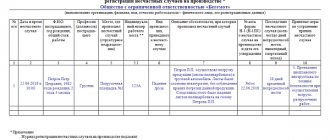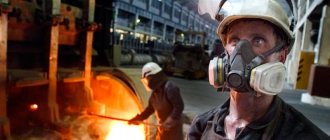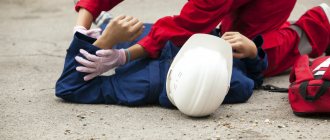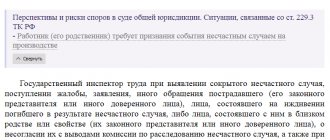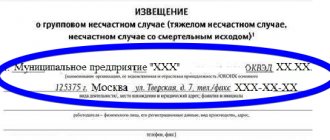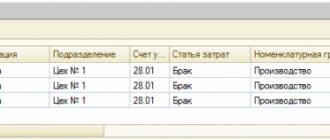How is it carried out at the enterprise?
Prevention of industrial injuries has three main steps:
- Conducting briefings with employees: initial introductory, unscheduled, repeated, targeted.
- The immediate supervisor must monitor the condition of employees and the readiness of the workplace on a daily basis. Throughout the working day, he also monitors the correct use of equipment, technological processes, etc.
- The manager is obliged to check compliance with all standards established at the enterprise at least once a month. For this purpose, appropriate specialists are involved.
- Once a quarter, a commission is created to inspect all production departments. Compliance with all requirements, the conduct and execution of briefings, the technical condition of equipment and buildings, and the elimination of previously identified violations are checked. It is necessary to check compliance with all standards for each workplace. It is deviations that lead to accidents and, accordingly, injuries.
To reduce and reduce injury rates to zero, the employer must constantly carry out injury prevention.
It is expressed in a number of activities and preventive measures to prevent accidents at work. Activities may also be of a technical nature.
Main measures to prevent accidents at work
There are many different measures to prevent injuries in the enterprise.
All measures and activities aimed at preventing accidents at work are accompanied by special documentation.
The main preventive measures are:
- Creation of a special service and introduction of the position of occupational safety specialist into the staff.
- Eliminating human contact with materials, components, finished products and waste that have a negative impact on health and life.
- Replacement of harmful and dangerous factors with safe conditions (absent or not exceeding standards).
- Periodic medical examinations of employees.
- Conducting inspections of workplaces for compliance with SNiP and GOST standards.
- Automation and mechanization of the process in the presence of harmful working conditions.
- Equipment sealing procedure.
- Control over the use of personal and collective protective equipment for employees.
- Taking measures to prevent the occurrence of hazardous factors in the workplace.
- Timely response to employee requests and complaints.
Workers have direct contact with the equipment and the production itself, so the manager is recommended to listen to their opinion.
Also, preventive measures to prevent industrial injuries include:
- The use of waste-free technologies or their timely disposal if they have an increased degree of harmfulness.
- Introduction of special signals, lights, safety signs, markings, posters in the production area. Many people, even after reading the instructions, forget about safety measures. Such a tool will help you remember them, as it will be constantly in front of your eyes.
- Monitoring compliance with work and rest schedules. Labor time must be used rationally. The employer must clearly ensure that the person is involved in work within the limits established by labor legislation. If they are not followed, fatigue and, accordingly, occupational injuries increase.
- Timely and high-quality delivery of occupational safety training and knowledge testing. In order to carry out these events, special instructions and internships are organized. All employees must sign their signature in special journals. Periodically, the employer tests employees' knowledge, which helps prevent injuries and reduce the number of accidents at the enterprise.
- In case of violation of established norms, the manager has the right to apply punishment to the guilty person.
- Carrying out activities to improve the qualifications of enterprise employees.
- Development and effective functioning of a labor protection and safety management system.
In order to reduce the incidence of industrial injuries, responsible persons are appointed to monitor the safety and serviceability of equipment, mechanisms, buildings, structures and machines.
Important! Work with increased danger must be carried out in the presence of work permits and special orders.
All of the above measures and activities are preventive, that is, preventing the occurrence of industrial accidents and injuries and are a component of preventing their occurrence at the enterprise.
An important task of prevention aimed at preventing injuries at the enterprise is the development of measures to prevent the increase in industrial injuries.
There are a lot of measures for this, they are not limited to the above measures.
Each manager, based on his own production specifics, has the right to establish individual measures to prevent injuries.
For this purpose, various analysis methods are carried out. The main one is the statistical method.
It allows you to determine the level of losses due to injury and the degree of injury for every thousand employees of the enterprise.
Special coefficients are also calculated - frequency, severity of accidents, losses from them.
Based on the results of the analysis, the employer can easily determine in which specific department it is necessary to take additional measures to prevent a decrease in the level of injuries.
Each accident at work must be documented; based on such reporting, analysis can then be carried out and an increase in the level of injuries can be prevented.
Occupational diseases and causes of their occurrence
Unlike injuries, occupational diseases arise gradually. Most often they occur during long-term work associated with hazardous working conditions.
For example
: riveting with pneumatic tools (as well as any work with tools that create vibration), work in the cold, work with harmful substances, in a foundry, work as a driver.
In production that is not associated with hazardous working conditions, there are also factors that increase the risk of developing occupational diseases, these are:
- poor sanitation, lack of good ventilation;
- ignoring protective equipment;
- non-compliance with the technological process, non-compliance with the work and rest regime;
- outdated technologies.
Professions most at risk of developing occupational diseases
Professions with an increased risk of developing occupational diseases (they are also included in the category with increased occupational injuries) include:
- builders;
- miners;
- collectors;
- steelworkers;
- rescuers;
- divers;
- railway track installer;
- drilling rig operators;
- journalists;
- law enforcement agencies;
- teachers;
- energy and others;
(those underlined are most at risk).
Analyzing the list, we can conclude that occupational diseases arise not only at the physical level in professions associated with heavy physical labor and dangerous conditions, but also at the mental level (teachers, police, etc.).
Return to content
Measures to prevent and reduce industrial injuries
One of the most serious problems in organizing the activities of an enterprise is ensuring safe working conditions for workers. To do this, the enterprise must regularly analyze the level of industrial injuries, find out its causes, make the necessary changes to the technical process and, based on this, predict the future level of injuries at the enterprise and develop measures to reduce it to a minimum.
Methods for recording and analyzing industrial injuries
There are different methods for analyzing and predicting industrial injuries. The main one is statistical; on its basis, group and topographical ones have been developed. Also, specialists regularly use monographic, economic and scientific forecasting methods. Let's take a closer look at them.
Statistical analysis:
relies on bare statistics: what, where, when and to whom happened. All data on accidents is entered into a database and systematized. The data is analyzed to determine the most common work-related injuries, determine the most dangerous time (shift, calendar day, daily hour), find out the age of employees who are most prone to injury, and so on.
Based on these data, various occupational injury rates are calculated. So, when analyzing, the employer needs to calculate several indicators, one of which is the frequency rate of industrial injuries
(Kch). Determined based on the number of injuries received per 1,000 (10,000, 100,000) employees over a certain period of time (month, quarter, year). For this, the formula is used:
Kch = Tr x 1000 / St, where:
- Тр – number of injuries over the allotted period of time;
- St – the number of employees working in the organization for the same period (the average number of employees is taken into account).
The second is the gravity coefficient (Kt). In this case, it is determined how severe the consequences of the injuries received by the workers were (without taking into account deaths and injuries resulting in disability). Due to the fact that the CT does not take into account the most severe accidents that result in disability and death, it must be supplemented with information about cases of complete loss of ability to work or death of victims. The formula used for calculation is:
Kt = Dn / Tr, where:
- Day is the total number of days of incapacity (when the affected employees were on sick leave);
- Tr – number of injuries over a certain period of time.
The higher the indicator, the more severe the level of injuries received by workers, but in the case of a small enterprise where few injuries occur, the severity coefficient does not provide objective information. A more objective indicator is the injury loss coefficient (CI). It allows you to calculate the number of days of disability on average per 1,000 people. Calculated using the formula:
Kp = Kch x Kt, where:
- Kch – injury frequency rate;
- CT – severity coefficient.
The coefficient of injuries resulting in employee disability or death (Ksi) together with the indicator Kch add up to a certain theory of dependence on one another. In the scientific literature, this relationship is called the Heinrich triangle. Its construction is based on analytical research and analysis. On average, for every 300 minor accidents there is 1 major damage. Ksi is calculated by the formula:
Xi = CTr x (100% / Tr), where:
- CTr – the number of injuries over a certain period of time that resulted in the death of an employee or his disability;
- Tp – the total number of injuries over the same period of time (including fatalities).
For greater convenience, the injury prevention cost ratio (CP) is also calculated at an average level per 1,000 employees. The formula used is:
Kz = Z x 1000 / St, where:
- Z – costs for a certain period of time;
- Tr – the average number of employees in the organization for the same time.
The injury-free period (PFP) calculates the average length of time between previous and subsequent work-related injuries (in a workshop, at an enterprise, among workers in a given profession, on a given type of equipment, etc.). To do this, use the formula:
Pbt = Dn / Tr, where:
- Day – number of working days for a certain time;
- Тр – number of injuries for the same period.
The given formulas allow the employer to determine with the accuracy he needs all the main indicators of occupational injuries that have occurred. Each large employer has its own accepted standards for all of these coefficients. If one of the actual indicators is higher than normal, the employer needs to do something to reduce the number of accidents in the future.
Group and topographic
Both of these methods are also based on statistical data.
Group method
studies all occupational injuries that have occurred (without taking into account the severity of the consequences) and places them into certain categories:
- age group of employees and their length of service;
- the cause of the injury;
- the nature of the injuries received;
- profession (position) of the affected workers, and so on.
The group analysis method makes it possible to determine which category of workers is the most vulnerable, so the employer knows what he needs to pay special attention to.
Topographic method
Based on statistics, determines the location of occupational injuries. On the map of the enterprise (workshop, entire plant) all the places where accidents occurred to employees are indicated. This method allows you to find out whether a high level of occupational injuries is associated with problems in a certain area. If in one of the workshops (divisions) the concentration of accidents is too high, a detailed inspection of this room should be carried out.
Monographic
The monographic method thoroughly studies all the details of the cases that occurred:
- organization of technical process in production,
- the employee’s condition (whether he was tired or intoxicated),
- time of injury,
- features of the workplace,
- what equipment was used by the employee,
- whether personal protective equipment was worn and in what condition it was. It makes sense to use the monographic method for each individual case (for which a special commission is created at the enterprise) and compare the results obtained with previous reports.
Economic
The main essence of the economic method is to calculate the feasibility of introducing new labor protection measures. For example, is it worth hiring a special employee responsible for preventing industrial injuries? To do this, the employer calculates the average amount of material costs (Km) per accident using the formula:
Km = Mz / Tr, where:
- Мз – the total amount of material costs spent in connection with industrial injuries;
- Тр – number of injuries for the same period.
Next, the employer needs to determine the effectiveness of attracting an employee responsible for injury prevention (how many cases of injuries he can prevent) and based on this decide what will be more profitable financially: the cost of a new employee’s salary and the cost of all his initiatives, or the cost of coverage for damage from industrial injuries.
Scientific forecasting
The main goal of the method is to determine the possible number of future accidents based on all available data (industrial injuries in previous periods, measures taken to improve labor protection, the condition of equipment at the enterprise, and so on). In order for the method to be as effective as possible, it is necessary to develop a computer program based on it that would make it possible to quickly assess the situation at the enterprise and prevent injuries.
